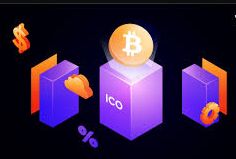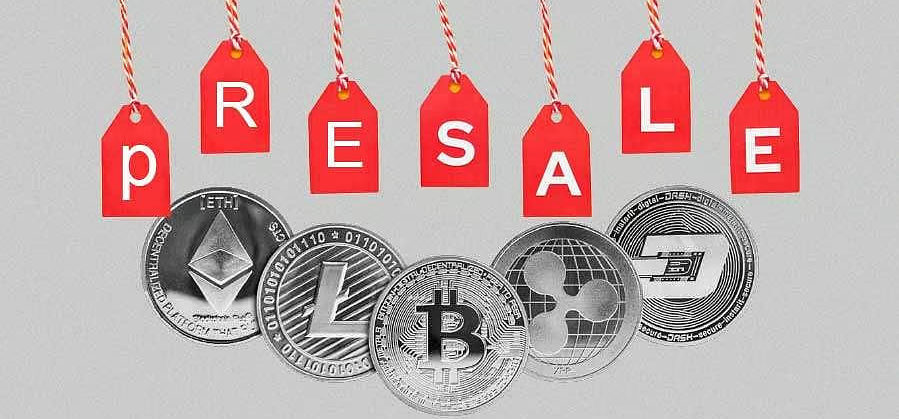Margin Bets on Binance
Binance Margin Rates Explained: Interest Fees, Tiers, and Risk Management

As someone who has traded on Binance for several years, I view margin trading as a tool—not a strategy in itself. It’s powerful when used correctly, but dangerous if misunderstood. Binance offers both isolated and cross margin accounts, giving traders flexibility over how risk is distributed across positions. Before diving into interest rates and fee structures, it’s essential to understand what margin is, how it works on Binance, and who it is best suited for.
- Introduction to Binance Margin Trading
- How Binance Margin Accounts Work
- Daily Interest Rates on Borrowed Assets
- Understanding Binance Margin Interest Rate Tiers
- Isolated vs. Cross Margin: What’s the Difference?
- How to View and Monitor Interest Accrual in Real Time
- Margin Call Thresholds and Forced Liquidation
- Understanding Liquidation: How It Works and What Triggers It
- Cross vs. Isolated Margin: What’s Best for You?
- Borrow Limits and Asset Availability
- How Binance Sets and Adjusts Margin Interest Rates
- Margin Call Warnings and Auto-Liquidation
- Auto-Borrow and Auto-Repay Features
- Comparing Margin Trading to Futures Trading on Binance
- Tax and Recordkeeping for Margin Interest

Introduction to Binance Margin Trading
Margin trading on Binance allows users to borrow funds to increase their buying power beyond the amount they currently hold. Essentially, it’s a way of leveraging assets to potentially amplify returns. But with greater opportunity comes greater risk. If the market moves against your position, losses can exceed your initial investment.
How Binance Margin Accounts Work
When you open a margin account on Binance, you’re essentially opening a credit line using your existing crypto as collateral. Binance provides the borrowed funds, and you agree to repay them with interest. You can choose between an isolated margin account—where risk is limited to a single position—or a cross margin account, where all your balances are pooled to cover losses across multiple positions.
Let’s say you have $1,000 in USDT and borrow $1,000 more to buy BTC. You now control a $2,000 position. If the value of BTC goes up, your gains are amplified. But if it drops, you face liquidation once your margin ratio falls below a critical threshold. Binance continuously calculates this margin level, and if it drops too low, your assets may be sold to repay the loan.
From my experience, traders who fail in margin trading often do so not because of bad strategy, but because they don’t understand how margin calls and liquidation thresholds work. This is why knowing how interest rates accumulate is vital.
Daily Interest Rates on Borrowed Assets
Every asset you borrow on Binance accrues interest over time. This is the cost of borrowing, and it’s calculated daily (and sometimes hourly) depending on market volatility and supply/demand dynamics. These interest rates vary by asset—for instance, borrowing USDT or BUSD often costs less than borrowing BTC or altcoins.
Rates are typically expressed as an annualized percentage but calculated and charged per hour. So if a rate is 10% APY, you’re charged roughly 0.00114% per hour. While this might seem small, it adds up, especially during extended trades or sideways markets where your position doesn’t close quickly.
I always recommend traders track their borrow costs closely. Holding a leveraged position for days or weeks can eat away at profits—sometimes even turning a good trade into a break-even or loss. You can monitor live rates directly in your margin dashboard.

Understanding Binance Margin Interest Rate Tiers
Binance uses a tiered system for margin borrowing, meaning your interest rate depends on how much you’ve borrowed relative to your collateral. As your loan size increases, you may move into a higher tier, which could carry higher rates and lower maximum leverage.
For example, Tier 1 might allow you to borrow up to 5x leverage at a low interest rate, while Tier 3 might reduce leverage to 3x and increase interest. These tiers exist to manage systemic risk on the platform and prevent over-leveraging across the ecosystem.
Here’s a simplified sample table (illustrative, not real-time):
| Tier | Borrowed Amount Range | Max Leverage | Daily Interest (USDT) |
| 1 | $0–$5,000 | 5x | 0.01% |
| 2 | $5,001–$50,000 | 4x | 0.03% |
| 3 | $50,001+ | 3x | 0.05% |
In my experience, staying within lower tiers helps reduce both your cost and risk exposure. I usually rebalance or repay part of the loan if I’m approaching a higher tier just to keep my rate manageable.
Isolated vs. Cross Margin: What’s the Difference?
Binance offers two types of margin accounts, and understanding the difference between them is essential before borrowing any funds. Isolated margin means that each trading pair (e.g., BTC/USDT) has its own margin balance. If one position fails, only that position is affected. On the other hand, cross margin uses your entire account balance to support all margin positions collectively.
For conservative traders or those testing margin for the first time, I recommend starting with isolated margin. It limits your exposure. If something goes wrong with a trade, you lose only the funds allocated to that pair—not your entire account.
Personally, I use cross margin only when I’m managing multiple positions and want more flexibility to prevent premature liquidation. But it requires discipline and constant monitoring. A sudden drop in one asset can trigger a liquidation cascade if you’re not careful.
How to View and Monitor Interest Accrual in Real Time
One of the most useful features on Binance margin is the ability to track your interest charges in real time. When you borrow funds, you can instantly see how much interest is accumulating per hour, per asset. This transparency allows you to manage long trades more effectively.
To view this, go to your Margin Wallet, then click into the asset you’ve borrowed. You’ll see the total borrowed amount, current interest rate, and accrued interest. You can also access a full repayment schedule or manually repay part of the loan at any time. Binance gives you the option to repay from spot balances or automatically sell assets to cover the loan.
I strongly advise checking your interest accrual daily, especially if you’re holding positions overnight. Once, I left a leveraged trade open over the weekend thinking the market would move, but it stayed flat and I ended up losing money just from interest. Don’t make that mistake.

Margin Call Thresholds and Forced Liquidation
A margin call on Binance is a warning that your collateral is insufficient to support your borrowed funds. If you don’t act—by adding more margin or reducing your borrowed amount—Binance will liquidate your position to cover the loan. The point at which this happens depends on your margin ratio.
The margin ratio is calculated as:
(Total Asset Value + Borrowed Value) / (Borrowed Value + Interest Accrued)
When this ratio falls below the maintenance level (usually 1.1 or 110%), Binance triggers liquidation. That means your assets will be sold—often at a market rate—potentially incurring slippage or losses beyond your control.
In my view, margin calls are preventable. I keep an alert threshold at 1.3 and always add collateral or scale down positions before it hits critical levels. Binance also offers notifications via email and app alerts. Use them. Don’t wait until it’s too late to act.
Understanding Liquidation: How It Works and What Triggers It
Liquidation is the automatic process by which Binance closes out your position to prevent further losses — both for you and the exchange. It’s a mechanism that protects the platform’s lending pool from insolvency, and as a margin trader, you need to understand exactly how and when this happens.
Liquidation is triggered when your margin level (i.e., total asset value divided by your total liabilities) drops below 1.1. At that point, Binance’s system intervenes and starts closing positions to repay borrowed funds. It’s important to understand that liquidation is not partial unless you’re using Cross Margin with multiple positions — and even then, it’s not always controlled or favorable.
Once the liquidation process begins, Binance charges a liquidation fee and sells off your assets at the current market price, which might be unfavorable during high volatility. The exact portion sold depends on your exposure, but the goal is to recover the borrowed funds plus accrued interest. If your account doesn’t cover the full debt, Binance absorbs the loss — but that’s extremely rare, and usually, your remaining balance gets wiped.
I’ve worked with traders who had perfectly good trades go against them briefly — only to get liquidated due to tight margin. That’s why I always stress the importance of keeping your margin level comfortably above the threshold — ideally around 1.5–2.0.
If you get a margin call warning, treat it seriously. It’s your last opportunity to add collateral, reduce position size, or exit before the system takes over. Liquidation doesn’t just erase funds — it ends your decision-making power.
Cross vs. Isolated Margin: What’s Best for You?
Choosing between Cross and Isolated Margin is one of the first strategic decisions you’ll make on Binance — and it has long-term consequences on your trading risk and flexibility. I’ve used both extensively, and I always explain the difference clearly to my students before they open their first trade.
Isolated Margin confines your borrowed funds and collateral to a single trading pair. This means if you go long on BTC/USDT and that position turns against you, only the funds in that isolated wallet are at risk. Your other assets — and other trades — remain unaffected. This is ideal for beginners or traders who prefer strict risk limits. It also helps develop discipline and avoids domino-style liquidations across multiple pairs.
Cross Margin, by contrast, shares the balance of your entire margin account across all open trades. It’s more flexible — especially when managing several positions at once — but it also increases systemic risk. One failing position can drag down your margin level across the board, triggering forced closures in otherwise profitable trades.
I usually recommend that new users start with Isolated Margin, at least until they fully understand how liquidation thresholds, borrowing limits, and margin levels work. Once they have experience managing simultaneous trades and more capital to buffer risks, Cross Margin becomes a more viable tool.
Remember: the same trade can feel completely different depending on which margin mode you use. Don’t underestimate the psychological impact of pooled risk versus isolated losses.
Borrow Limits and Asset Availability
When you start using margin trading, one of the first things you’ll notice is that not all assets are available for borrowing — and even for supported pairs, borrow limits vary widely. This is something many new users misunderstand, so I want to clarify exactly how Binance determines what you can borrow and how much.
Every token on Binance’s margin platform has its own borrowing cap, influenced by factors like market liquidity, volatility, and borrow pool availability. Highly liquid assets like USDT, BUSD, BTC, and ETH usually have high borrowing limits. Lesser-known or volatile altcoins tend to have low caps or may be unavailable for borrowing altogether.
Your own borrowing power also depends on whether you’re using Cross or Isolated Margin, your available collateral, and your account verification level. For example, a verified user with $5,000 in collateral and 2x leverage can borrow up to $10,000 in total trading capital. But this doesn’t mean you can borrow $10,000 of any token. The system will evaluate pool availability and cap your request accordingly.
Sometimes, borrowing is temporarily suspended for certain coins due to volatility or low liquidity. I’ve encountered this during market crashes when altcoin borrowing was paused to protect the lending pool. That’s why I always keep a few core tokens (USDT, BUSD, BTC) ready in case I need to borrow or hedge quickly.
To check availability and live rates, visit the “Margin Data” page under the Wallet section. It shows real-time interest rates, borrow caps, and your current limits. Make it part of your daily routine before placing margin trades — it will save you from confusion and rejected orders.
How Binance Sets and Adjusts Margin Interest Rates
One of the more technical aspects of margin trading on Binance is how interest rates are determined. Contrary to what some beginners believe, these rates are not fixed. They are dynamic and influenced by both internal liquidity pools and broader market conditions.
Each asset in the Binance margin system has a supply and demand curve. If demand to borrow a specific token is high (say, USDT during a bull run), and the available pool is limited, Binance will automatically increase the borrowing rate to encourage repayments and discourage overuse. Conversely, if there’s excess liquidity in the borrow pool, interest rates tend to fall.
Binance also factors in risk models. Volatile coins often carry higher base interest rates to compensate for lending risk. For instance, borrowing a stablecoin like USDC may cost 0.001% per hour, while borrowing something like SAND or DOGE may cost 0.003% or more.
The platform updates these rates multiple times per day, which is why I always advise traders to check the “Interest Rate” column in real time before executing a borrow. You’ll find this in the “Borrow” panel of your margin wallet interface.
I’ve personally seen users get caught off guard when borrowing during a period of market stress — and then realizing too late that the interest rate had doubled. If you’re managing large or long-duration positions, even a small rate change can seriously affect your cost basis.
Margin Call Warnings and Auto-Liquidation
A margin call is Binance’s way of saying, “You’re close to being liquidated — take action now.” It’s triggered when your margin level drops below a set threshold, typically 1.3, though this may vary by pair or product.
When your margin level enters this zone, Binance sends an email and in-app notification, warning you that your account is under risk. From that point, you have a limited window to either repay part of your debt, add more collateral, or close positions to reduce exposure.
If you do nothing, and your margin level continues to decline to 1.1 or lower, Binance will begin automatic liquidation. This is not a warning — it’s an enforced action. The system starts selling your assets at market price, and you’re charged a liquidation fee on top of the loss. I’ve seen entire portfolios wiped out in minutes because traders ignored margin warnings.
I always recommend setting up margin alerts in the app. These push notifications warn you well in advance — often before Binance itself does. And if you’re managing multiple margin trades, set aside a dedicated stablecoin reserve as emergency collateral. You may not need it often, but the one time you do, it can save your account.
Auto-Borrow and Auto-Repay Features
Binance offers two powerful features — Auto-Borrow and Auto-Repay — that simplify the process of margin trading, especially for users who place multiple trades quickly or don’t want to manage borrowing manually.
Auto-Borrow enables the system to automatically borrow assets for you the moment you place a margin trade. Let’s say you want to buy 2 ETH using USDT, but you only have enough for 1. If Auto-Borrow is enabled, Binance instantly calculates the shortfall, borrows the extra amount needed, and executes the trade in one click. It’s seamless and time-saving — especially useful in volatile markets where seconds matter. I’ve used this frequently during fast-moving setups, and it can be the difference between catching or missing an entry.
Auto-Repay does the opposite — it automatically repays any borrowed funds using the assets in your margin wallet once the position is closed. This is incredibly useful if you forget to go back and manually repay after profit-taking. I’ve worked with traders who left positions unclosed overnight and woke up to unnecessary interest charges — Auto-Repay prevents that.
These tools are optional and can be toggled in your account settings. I personally recommend enabling Auto-Repay at a minimum — it adds a layer of discipline that protects your margin account from silent debt accumulation.
Comparing Margin Trading to Futures Trading on Binance
Many new traders confuse margin trading with futures trading, but they are fundamentally different in structure, mechanics, and risk profile. I’ve traded both extensively, and the choice between them depends on your goals, experience, and risk tolerance.
In margin trading, you borrow actual crypto assets and take direct ownership. You’re using spot prices, and the borrowed amount accrues real interest over time. This method gives you flexibility — you can hold positions as long as you like (assuming your margin level is healthy) and use your assets freely.
Futures trading, in contrast, uses contracts — not actual tokens. You’re not borrowing crypto, and you’re not paying hourly interest. Instead, you’re subject to funding rates (which can be positive or negative) and predefined leverage. Futures offer higher leverage — up to 125x in some cases — but with much tighter liquidation margins and higher short-term risk.
Margin trading is ideal for longer-term positions, or when you want to hedge or leverage against assets you actually hold. Futures are better for short-term speculation, arbitrage, or volatility plays. I often tell beginners to start with margin — it feels more intuitive and has fewer hidden mechanics. Once you understand risk well, then graduate to futures.
Tax and Recordkeeping for Margin Interest
One often overlooked aspect of margin trading is how it impacts your taxes and financial records. In most jurisdictions, interest paid on borrowed funds is considered an expense and can reduce your taxable gains. However, keeping accurate records is critical — and margin trading adds a layer of complexity.
Each time you borrow, interest is calculated hourly and added to your debt. This interest is not deducted automatically, so it doesn’t show as a withdrawal — meaning it can be easy to miss. I recommend exporting your interest payment history regularly from Binance’s transaction tab and saving those CSV files to a secure drive. Include timestamps, asset type, and total borrowed.
In my consulting work with crypto tax professionals, I’ve found that regulators are increasingly paying attention to borrowed funds. If you’re deducting margin interest as a business expense or investment cost, they may ask for detailed logs. So don’t wait until tax season — automate this tracking from the start.
And one tip: label your margin interest payments clearly in your accounting software or spreadsheets. If you’re audited, you’ll be glad you took this extra step.
Mastering Margin Trading on Binance
Margin trading on Binance can be a powerful tool when used with discipline and a clear strategy. It allows you to amplify your capital, take advantage of short-term market opportunities, and hedge existing positions — but it also demands focus, risk control, and an understanding of the platform’s mechanics.
From interest rates that change hourly, to tier-based benefits for VIP users, to the choice between isolated or cross margin, this system is full of nuance. In my experience, traders who succeed with margin are not the ones chasing 10x profits — they are the ones who consistently manage exposure, use moderate leverage, and respect margin call thresholds.
My final recommendation? Start small. Get comfortable with isolated margin before trying cross. Monitor your margin level daily. Check borrow rates before each trade. And always — always — have a plan for exit, whether in profit or loss.
Used wisely, Binance Margin is not just a leverage tool — it’s a trading environment that rewards patience, preparation, and precision.
Frequently Asked Questions (FAQ)
How often does Binance update margin interest rates?
From my experience, Binance updates margin interest rates several times per day based on market conditions and pool liquidity. I’ve seen the rate for borrowing USDT jump from 0.001% to 0.002% in a single afternoon when borrowing demand surged. I recommend checking the “Margin Data” page before each trade.
Can I negotiate or lock in interest rates as a high-volume trader?
While you can’t lock in rates manually, Binance’s VIP tier system works in your favor. I’ve helped clients reach VIP 4–5 and saw their interest rates drop by 30–50%. The more you trade (and the more BNB you hold), the better the rates — it’s automatic, but very real.
What’s the safest leverage ratio for margin trading?
I’ve tested everything from 2x to 10x, and I always advise keeping leverage between 2x and 3x, especially for volatile assets. This gives enough flexibility without putting you near liquidation from minor market dips. High leverage may feel exciting, but it’s not sustainable.
Is it possible to trade margin without ever getting liquidated?
Yes — if you manage risk properly. I’ve traded margin for years and never once got liquidated, because I keep my margin level around 2.0 or higher, use stop-losses, and never borrow more than I can handle. Liquidation is preventable with discipline.
Should I use Cross or Isolated Margin as a beginner?
I always recommend Isolated Margin for new traders. It limits your risk to one pair, which is critical when you’re still learning. Cross Margin is useful later, but early mistakes can wipe your whole balance if you’re not careful.
What happens if I forget to repay a borrowed amount?
The debt stays active and continues accruing interest, which can silently grow and push you toward liquidation. I’ve seen this happen many times. That’s why I recommend enabling Auto-Repay — it closes the loop the moment you sell the asset.
Can I use BNB as collateral and still pay fees with it?
Yes — and I do it all the time. You can use BNB for both purposes: as collateral and as fee payment. Just make sure you hold enough BNB, because if your balance drops too low, you’ll lose the fee discount automatically.
What should I do when I receive a margin call warning?
Act immediately. You can either add more collateral, close part of the position, or repay some debt. I recommend having a USDT buffer ready in your margin wallet just for these cases. Waiting too long risks forced liquidation.
How are margin interest fees reported for tax purposes?
It depends on your country, but in most cases, margin interest is a deductible expense. I personally track it monthly and categorize it separately in my reports. Download your margin history regularly and keep it organized.
What’s the difference between margin interest and funding fees in futures?
Margin interest is charged hourly on borrowed crypto in spot margin trades. Funding fees are periodic payments between traders in futures contracts — and they can be positive or negative. I treat them as two separate cost centers in my strategy.
Are margin rates the same on Cross and Isolated?
Yes, the interest rates are the same, but the risk model is different. In Cross, your entire margin wallet is at risk; in Isolated, only the funds in that pair are affected. So while the cost is the same, the exposure is not.
Can I switch a trade from Isolated to Cross after opening it?
No — once you open a margin position in a mode, it stays there. I made this mistake early on, thinking I could transfer a trade between modes. You’d have to close the position and reopen it under the new margin type.
Is Binance margin trading suitable for long-term positions?
Only if you factor in interest cost. I’ve held some 1–2 week swing trades on margin, but I always calculate the projected interest ahead of time. If the cost outweighs the potential gain, I avoid it or reduce leverage.
Can I use margin trading to hedge my portfolio?
Absolutely. I often borrow USDT to short BTC or ETH during bear markets, using margin to hedge my spot holdings. It’s a very efficient way to protect your capital without selling your long-term bags.
What’s your #1 tip for successful margin trading on Binance?
Respect your margin level like it’s your life meter. I’ve seen skilled traders fail because they ignored it. Keep a healthy buffer, know your liquidation price, and don’t gamble with leverage. Margin is a tool — not a lottery ticket.












